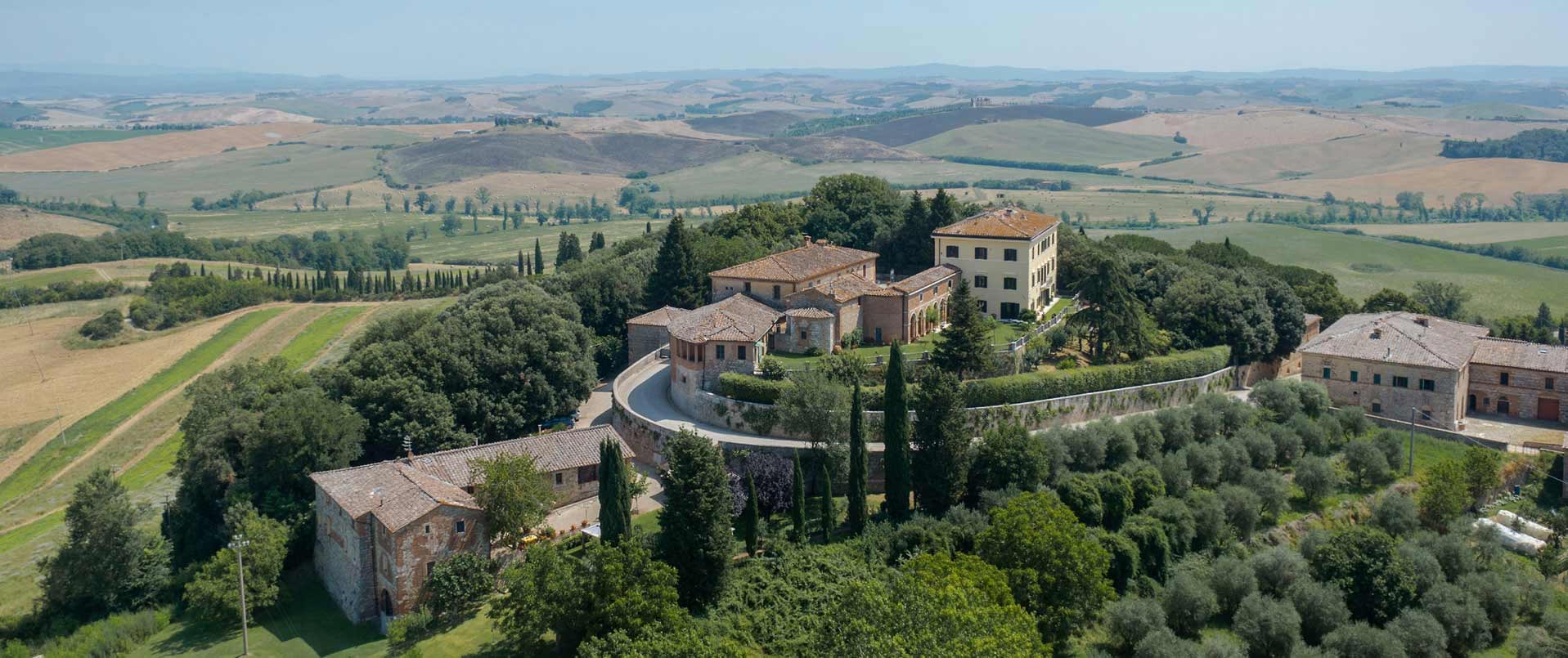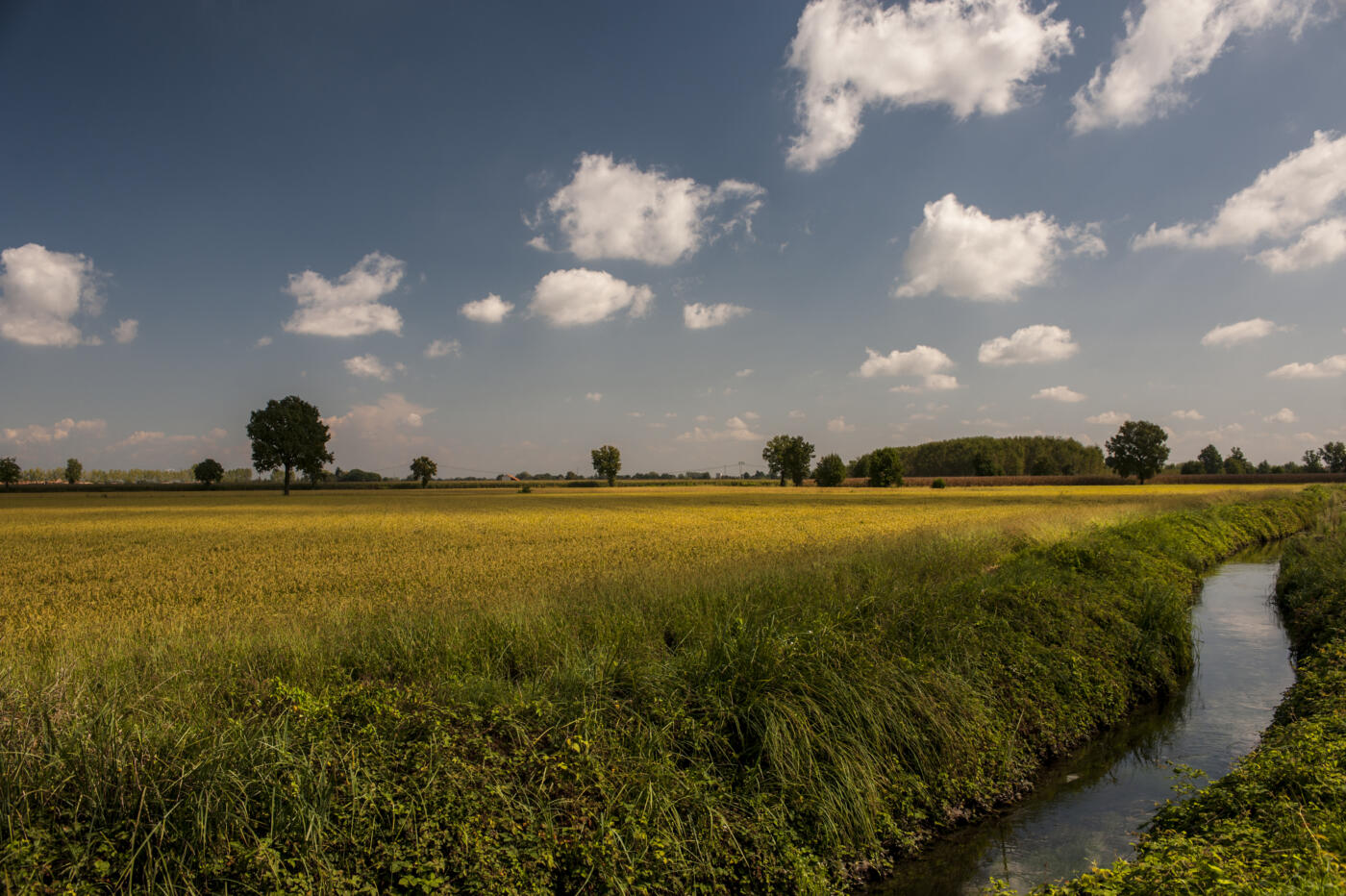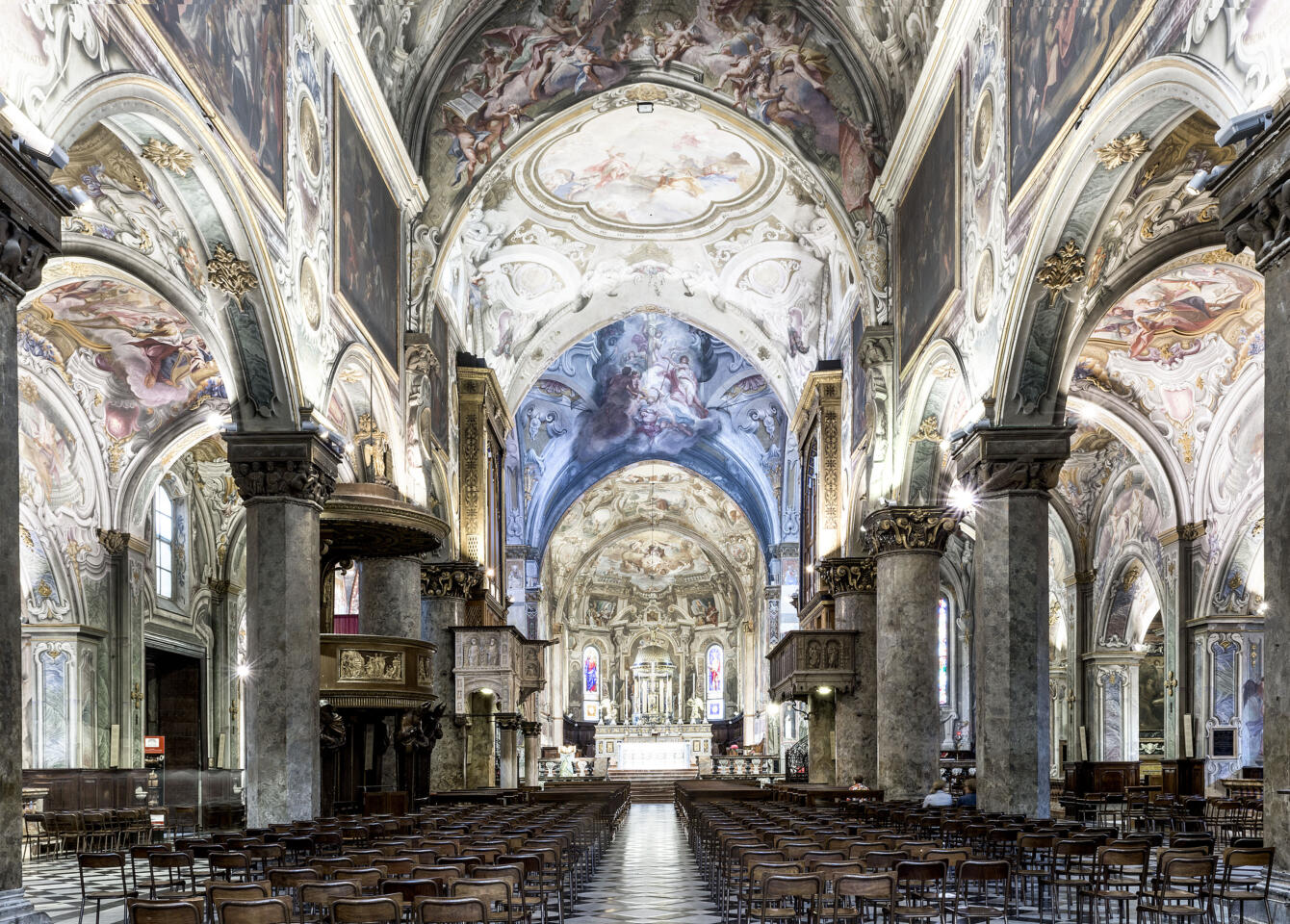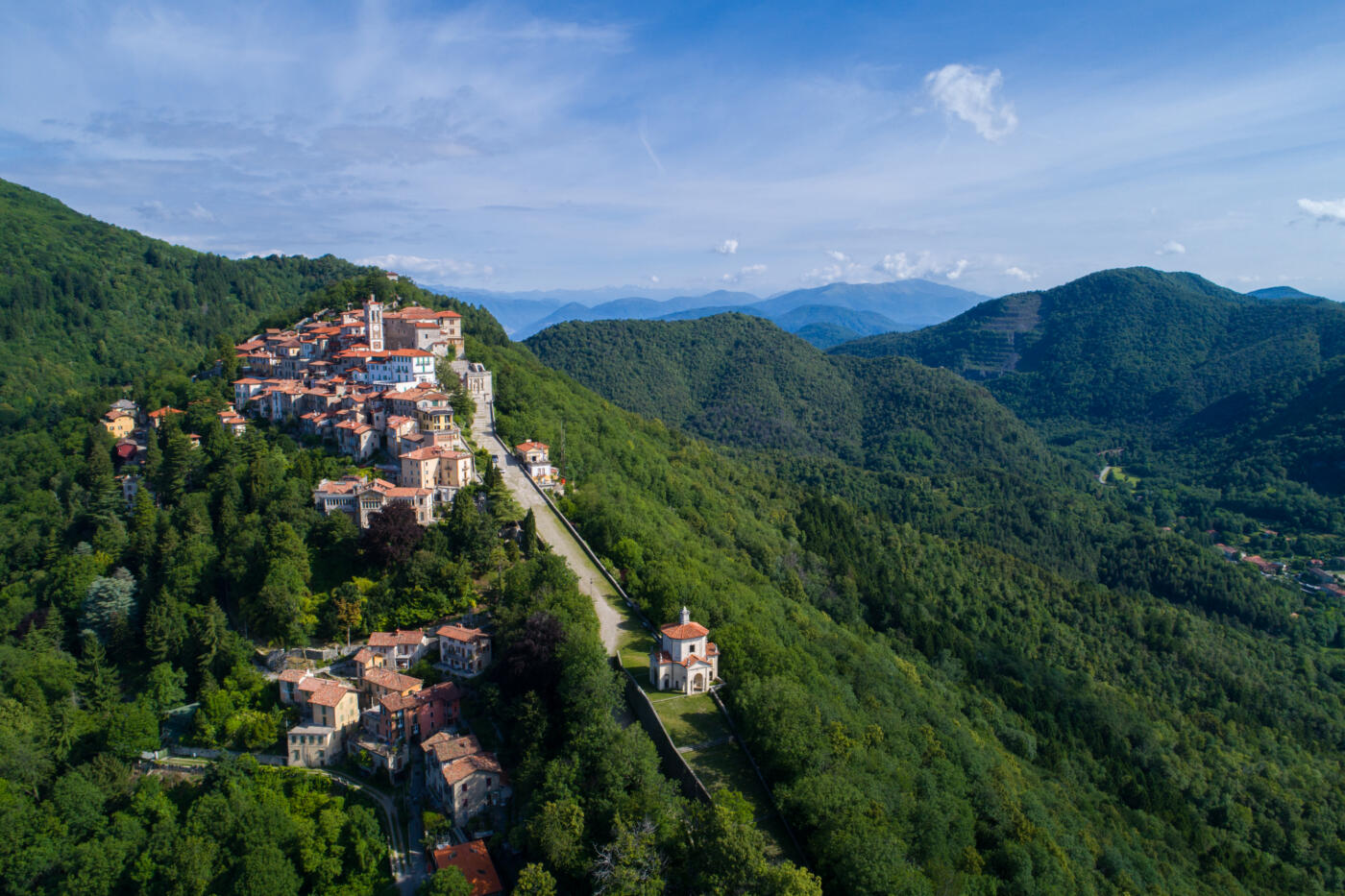
A major urban center, Milan extends northward to form a dense metropolitan region, together with Brianza. In contrast, the southern areas maintain a strong agricultural presence, and are a relatively short distance from its central Piazza Duomo. As singer-songwriter Lucio Dalla so aptly described it, Milan is “vicina all’Europa”: it embodies a thoroughly European spirit, while being geographically close to the lakes of Lombardy, all of which are easily accessible by road or rail. This itinerary, exploring historical residences associated with the Lombard capital, is not limited to the city itself; it also highlights how the landscape changes around the metropolis, moving from mountainous regions to rice paddies. Let’s begin our exploration in one of Milan’s most upscale neighbourhoods, in the Conciliazione area. Our first stop, then, is Residenza Vignale, which is situated conveniently near to the Milan Cadorna railway station, making life easy for reach some of the other destinations on our journey if you opt to travel by train. It is very well positioned for the Triennale art and design museum, Leonardo’s ‘Last Supper’ and the popular shopping district of Corso Vercelli. This historic Liberty-style building, dating back to the early 1900s, overlooks a charming flower-filled courtyard; its setting lends itself beautifully to the organisation of private events and temporary exhibitions. It goes without saying that there is a wealth of things to see and do for newcomers staying in Milan, but our goal is to reveal hidden gems outside this dynamic city. Our aim is therefore to explore the surrounding regions, so we set off along the ‘via del riso’ or ‘rice road’ in the direction of Vigevano, famous for footwear and its Piazza Ducale, which is considered to be one of the most beautiful squares in the whole of Italy. We then continue on to Lomellina, where the impressive Castello di Cusago stands. It was constructed by Bernabò Visconti, noble lord of Milan, partly as a retreat from epidemics and mainly to enable him to go on leisurely hunting expeditions at his summer home. Next on the map is Cassinetta di Lugagnano, situated near Abbiategrasso, the home of the stunning Villa Trivulzio Belgiojoso, built in the neo-classical style and featuring a large English-style park where philharmonic concerts are periodically held. Sections of the Villa and park can be rented for receptions, weddings, private events and photo shoots. Take advantage while you are in the vicinity and stop in at the legendary Pasticceria Besuschio, a delightful establishment that has been in operation since 1845 and is rightly renowned for its exceptional leavened pastries (the panettone fruitcake being perhaps the most celebrated). A little further down the road in Cassinetta, we can highly recommend Antica Osteria del Ponte, a restaurant that made history in Italian haute cuisine under the leadership of Ezio Santin, which is now under new management.

The route leading towards Lake Maggiore passes through the centre of the historic town of Magenta, remembered primarily for its victorious role in a crucial battle that helped secure Milan for the Savoy army. The majestic Basilica of San Martino here is the second largest in Lombardy, surpassed in size only by Milan’s Duomo. Follow the course of the Ticino River upstream, along the road to Milan Malpensa airport. No flights are planned for today, however, as we then make a detour to Gallarate and the Museo Arte Gallarate or MA*GA Museum, where an impressive collection of over 5,000 20th-century artworks are housed. The highlight for guiding you to this part of the world, meanwhile, is Castello di Jerago, just past Gallarate in Jerago con Orago. This castle was built in the early 13th century to defend the Duchy of Milan and became a fiefdom of the local branch of the Visconti family. After their line ended, the fortress was transformed into a residence. Two garden terraces were added, which have become some of its most attractive features. Today, it serves as a popular venue for weddings and elegant private events.
We are now off to Sesto Calende. For those arriving from Milan, this is the gateway to Lake Maggiore. The location is significant from a religious perspective because it houses the Abbey of San Donato, which dates back to the 9th century and is embellished with frescoes from various different eras, as well as the parish church of San Bernardino and the Oratory of San Vincenzo. But the real jewel in the crown on the Lombard side of Lake Verbano is the Rocca di Angera fortress, which is particularly striking when viewed from the Piedmont side of the lake. Originally a defensive stronghold built on a rocky spur overlooking the water, the Rocca was acquired by the Borromeo family in 1449, who transformed it into one of the most monumental palazzos in the whole of Lombardy. Guests can explore the Historical Rooms, including the Hall of Majolica, which displays three hundred pieces, and the Doll and Toy Museum, the largest of its kind in Europe. The Hall of Justice, frescoed from top to toe at the end of the 13th century by an anonymous artist known as the ‘Maestro di Angera’, is also a real must-see.

Higher up Lake Maggiore is the ISPRA institute, where the European Commission’s science and knowledge service, the JRC-Joint Research Centre, is based. This spot is perhaps even better known, and loved, for its ‘Passeggiata dell’Amore’, a panoramic trail named for the love poems displayed on tiles along the wall at the start of the path. Proceeding northwards to Laveno Mombello, you will pass the Hermitage of Santa Caterina del Sasso, with its truly spectacular setting, before arriving at our fifth destination, Parco di Villa Intragnola. This botanical park is sheer delight for plant lovers, as it contains a vast array of exotic conifers planted over a century ago, but the same can be said for anyone wishing to simply admire the lake views amidst beautiful plants and flowers. Spanning 7 hectares, the park offers a one-kilometre stretch of stunning vistas over Lake Maggiore. As the villa serves as a private residence and is not open for tours, the easiest way to have access to the park is by staying overnight at the adjacent Cascina Polidora Bed and Breakfast.
Upon departing from Laveno Mombello, choose the picturesque road that leads through Gemonio and Gavirate, heading towards Varese, the next stop on our journey. There is no shortage of sights to see in this vibrant city, beginning with the Sacro Monte or Sacred Mountain pilgrimage site, recognised as a UNESCO World Heritage site. There is also the Palazzo Estense with its magnificent gardens, Villa Mirabello and the Park of Villa Augusta, among many others. Varese is awash with delicious culinary temptations, such as the Lindt chocolate factory outlet at the Induno Olona plant, and the historic Angelo Poretti brewery nearby, which offers on-site visits and tastings. A great gastronomic interlude awaits you the Da Venanzio restaurant in Induno Olona, a local institution since its inauguration in 1922.

It is time to leave Varese and prepare to return to Milan. Following the course of the Olona river, you will pass by Tradate, where a remarkable collection of petrol pumps is displayed at the Fisogni Service Station Museum. There is also the workshop of a brand well-known for its high-quality men’s shoes here, namely Artioli. Take a left turn at Tradate, and cut horizontally through Brianza, passing through Lomazzo and Cermenate en route for Arosio, where the last historical residence of our tour is located. Villa Medici Giulini dates back to the 17th century and served as a summer home for the generations of families who lived there over the years. Today, the Villa offers guests the possibility of immersing themselves in art and music, while admiring the paintings of Francesco Zuccarelli, the assemblage of musical instruments and the examples of elegant evening attire displayed within its walls. Between Arosio and Milan, there is one final stop to make. Monza is frequently referred to as ‘the Versailles of Lombardy’. This city’s biggest claim to fame is its Royal Palace, which incorporates the Royal Villa, the Royal Gardens and the Park, where the Italian Grand Prix Formula 1 takes place at the Monza National Autodrome every year. It is well worth taking the opportunity to explore the historic centre with its Cathedral and museum of treasures, including the Iron Crown, which is said to contain a metal band made from a nail of the True Cross. Nearby, the charming, cobble-stoned pedestrian thoroughfare of Via Italia has been paved with porphyry slabs since the Lombard era. For those interested in fine wines and spirits, a visit to the Meregalli wine shop, established in 1955, is an absolute must, and is the perfect place to mark the end of our journey.